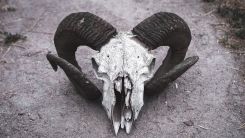
Kendra Stacy


'Demon Fire' Worms Discovered in Japan; Scientists Name Them After Ancient Evil Spirits Because of Their Ghostly Glow

Jurassic Park Is Wrong: T.Rex Actually Had Lips Like a Lizard, New Study Reveals

Flattest Explosion in Space? Scientists Dig Deeper Into 'The Cow' and Its Mysteries

Woman Had 100lbs Ovarian Cyst Surgically Removed, Making Her 'Feel Like a Person Again'

Spider Mating: Female Funnel Weavers Play Dead During Sex To Make Males Less Worried About Getting Eaten After

2,000 Mummified Ram Heads Unearthed in Ancient Egyptian Temple May Have Been Offered As Tribute to Ramesses II

Humans Aren't Even Close to Reaching Maximum Longevity, Controversial Mathematical Research Says

Previously Classified Radio Galaxy Is Now a Blazar With Supermassive Black Hole That Faces Earth, New Research Suggests

Live Forever? Humans Could Reach Immortality in 8 Years Through Nanobots, Says Former Google Engineer

Patient Treatment Mistakes? This Doctor Lays Out His 'Golden Rules' To Help Prevent These Errors

Mysterious Glass Beads Found on the Moon Could Be Massive Water 'Reservoirs'

Lab-Grown Mammoth Flesh Used For Making Prehistoric Meatball; Is It Edible?

Another Giant Coronal Hole Found Sitting on the Sun's Equator; It Could Release Solar Winds Moving at Speed of 1.8 Million Mph

Exercise as Serious Depression Treatment? Massive Study Suggests That Its Power Should Not Be Underestimated

Drunken Man Had Glass Cup in His Butt For Three Days, Needed Surgery To Get It Yanked Out

Venus Statue, Other Artifacts Uncovered in Roman-era Rubbish Dump

Deadliest Storm in 50 Years: Violent Wedge Tornado Hits Mississippi, Killing At Least 26 Individuals

Planetary Parade: Five Planets, Crescent Moon Align in Night Sky

Work in 2050? Experts Say the Workplace Will Be Shaped by Futuristic Technologies, Including Hologram Receptionists, Tea-Delivering Drones

Tardigrade Proteins Could Lead to Medical Breakthrough, Preserving Drugs Without Refrigeration?

Village Full of Copper Deposits? Here’s Why It Was a Vital Trade Center During Late Bronze Age

Six-Week Trip to Mars? VASIMR Plasma Engine Could Propel Spacecraft to the Red Planet in a Short Period of Time

Mysteries of the Universe: Two Meteorites Shed Light Into Deep Outer Space

Keep Your Brain Healthy: Higher Magnesium Consumption May Reduce Dementia Risk, Lessen Age-Related Shrinkage

Mount Everest Preserves Germs That Climbers Sneeze Out and Cough; Hardy Microbes Can Stay for Decades or Centuries

Neuroscience Behind Mother Tongue: One’s Native Language Affects Brain Wiring, Study Says

Space Exploration Revolution: NASA's 'Pellet-Beam Propulsion' Could Enable a Probe to Reach Interstellar Space in 5 Years

Meteor Crash 3.48 Billion Years Ago: Scientists May Have Found the Earliest Evidence for a Meteorite Impact

2,200-year-old Prehistoric Zodiac Paintings at Egyptian Temple of Esna Have Been Uncovered During a Restoration Project; How Important Were These Then?
Most Popular

Mysterious Structures Discovered Beneath the Pacific Ocean, Puzzle Scientists

Largest Known Volcanic Aquifer Discovered Beneath Oregon's Cascades

New 'Supergiant' Sea Bug Found in South China Sea, Named After Darth Vader

Mediterranean Sea Was Refilled by a Catastrophic Flood Millions of Years Ago




